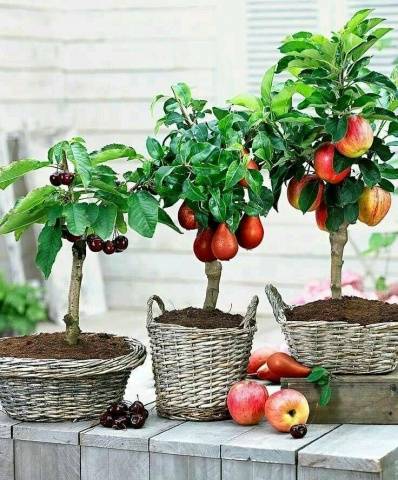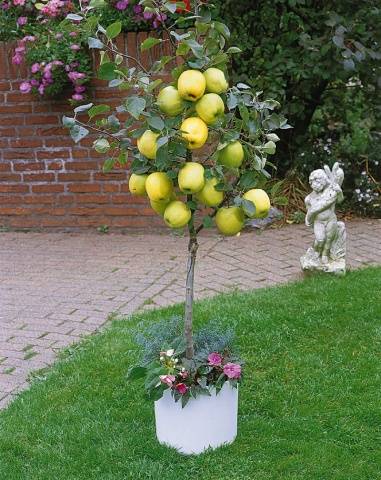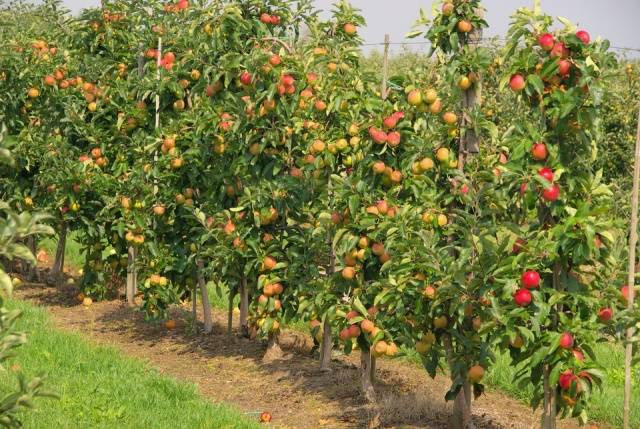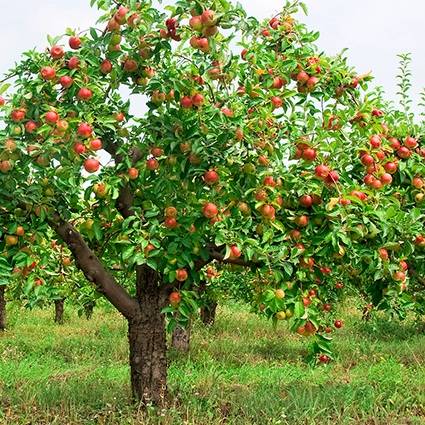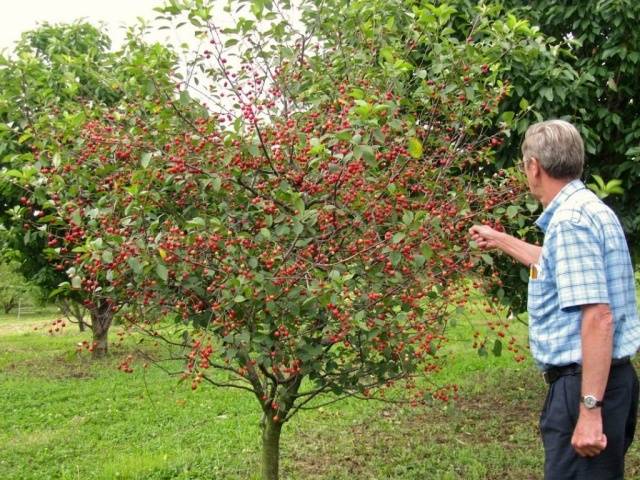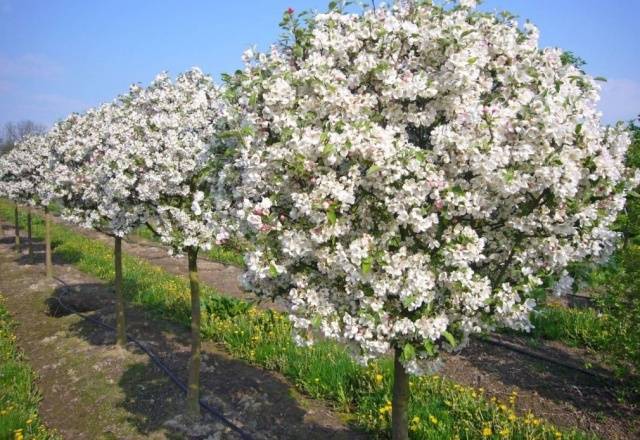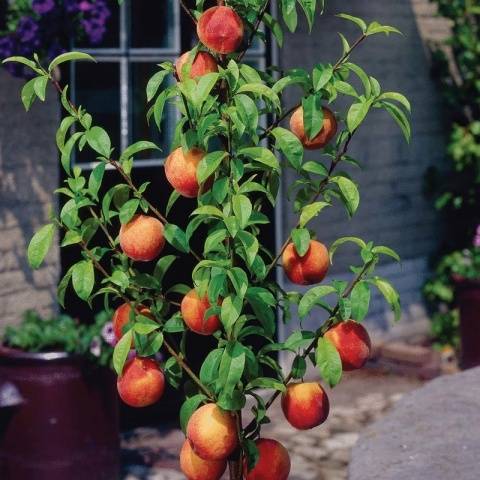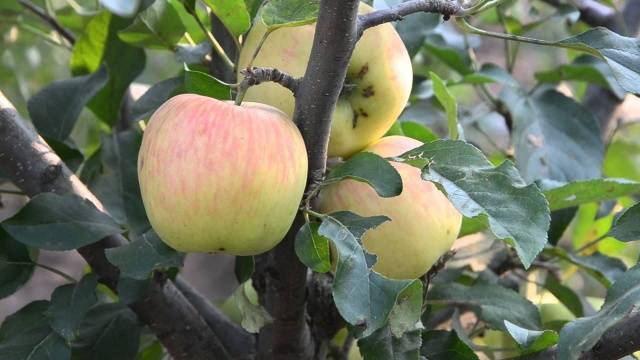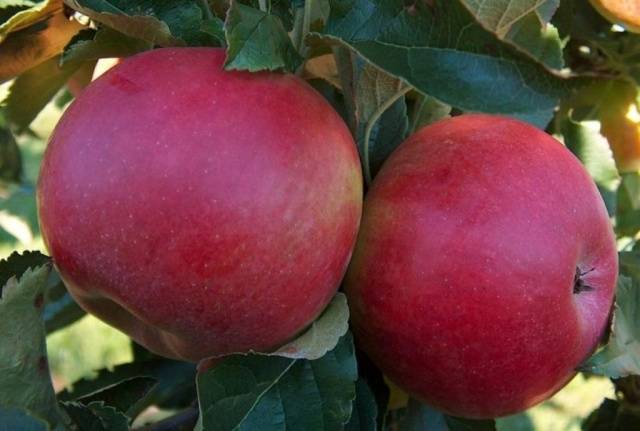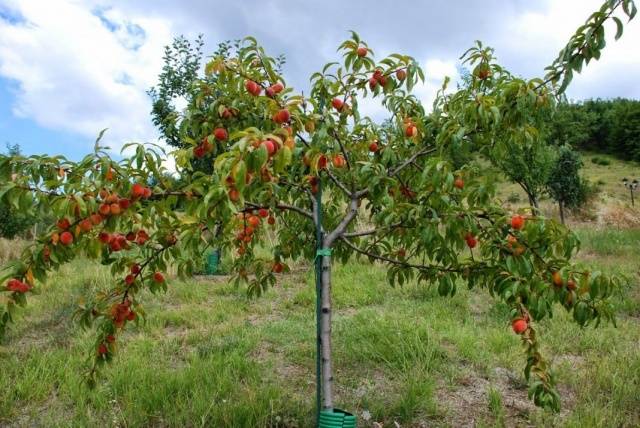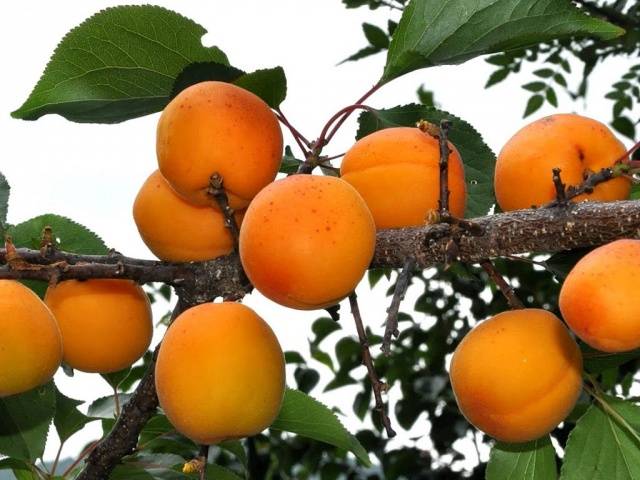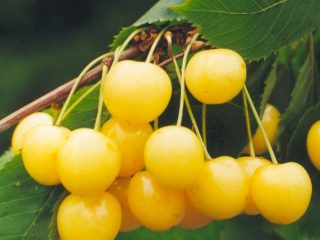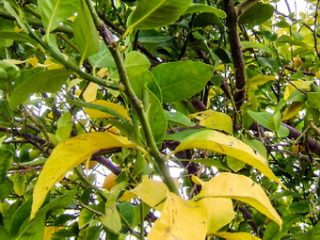Very often the orchard lacks space for all the crops and varieties that the owner would like to grow. Ordinary Russian summer residents know firsthand about this problem, trying to fit a residential building, a vegetable garden and an orchard on six acres of land. An excellent way out in such a situation can be planting dwarf trees, which are not inferior to conventional crops in yield and quality of fruits, but take up much less space. Compact fruit trees have a lot of advantages, but there are some nuances in growing "dwarfs" that must be taken into account.
The features of "dwarfs" and recommendations for their cultivation will be discussed in this article. The most popular ones will also be listed here. varieties of dwarf fruit trees and gardeners' reviews of some of them are given.
Features of "dwarfs"
Dwarf fruit trees for the garden are a group of crops that are notable for their low height and the presence of an end point of growth. All compact fruit trees are divided into two groups:
- natural "dwarfs"that grow up to 1.5-2 meters and stop growing on their own;
- grafted "dwarfs", which can be obtained by grafting low-growing varieties of fruit trees on a special dwarf rootstock. Such trees grow, as a rule, up to 2.5-3 meters, they must be properly cut, limiting growth and regulating the direction of the shoots.
Choosing dwarf varieties for growing on their own plot, the gardener should be aware of some of the features of these trees. First of all, "dwarfs" have a small crown and the same compact root system. Therefore, they require much less space in the garden than conventional tall varieties.
With all these virtues, it is necessary to understand that the root system of dwarf fruit is located superficially, so the tree will need more moisture and nutrients.
Another feature of dwarf fruit is earlier fruiting - already in the second or third year after planting, the gardener can wait for the first harvest. Natural "dwarfs" have a short life cycle - about 10-15 years, after this time the trees grow old, their productivity sharply decreases. Grafted undersized varieties live longer - 20-30 years, here much depends on the lifespan of the stock.
Advantages and disadvantages
Most of the reviews about dwarf fruit trees are positive - these crops are in demand among gardeners, more and more high-quality rootstocks are appearing, there is a choice in accordance with the climatic characteristics of the region.
The biggest plus of low-growing varieties is the convenience of growing and caring for them: it is much easier to maintain a two-three-meter tree than a taller crop.
The advantages of dwarf breeds do not end there, gardeners note the following qualities:
- Early fruiting. Within two to three years after planting, the undersized seedling begins to bear fruit, and in 6-8 years the fruiting of the tree becomes stable. This occurs several years earlier than in conventional tall varieties.
- Productivity at "dwarfs" the bottom is not worse, often even better than that of ordinary fruit trees. It is thanks to this quality that dwarf crops have become so widespread: in a small area from a small tree, you can collect as much fruit as from a tall one.
- Fruit quality and size among "dwarfs" they are in no way inferior to standard varieties of fruit trees. The fruits are just as tasty, juicy and aromatic. And their size is often even larger and more uniform.
- The compact size of the crown is essential simplify care behind a tree. Pruning, spraying, harvesting becomes much easier, no need for high stairs and special devices.
- A dwarf tree will require much less nutrients and processing means, this is a significant savings in the gardener's budget.
- Ripening terms fruits in dwarf varieties are shorter and earlier than in ordinary trees. This is due to accelerated vegetation and rapid sap flow.
- Compact dimensions allow to grow one tall tree or 4-6 "dwarfs" on the same area.
This is not to say that the cons of a dwarf garden are very critical, and it is better to abandon the idea of compact gardening. But it is imperative to take these nuances into account:
- Large material investments. You will have to spend a lot more money on the purchase of seedlings than on the purchase of conventional varieties. The problem is solved by grafting inexpensive low-growing varieties on a dwarf stock. But, even in this case, you will have to spend money on purchasing a pair of plants, instead of one.
- Frequency of withdrawal. You need to care for a dwarf garden in the same way as for a traditional one. But this will have to be done more often: mini-trees should be watered regularly, fertilized more, and treated stably against pests and diseases.
- Average, "Dwarfs" live in half, therefore, the gardener will have to uproot old plants more often and buy new ones.
- It is more difficult for low trees with a shallow root system to keep up with gusts of wind or the weight of the crop, so they support needed.
- Due to the high yield and poorly developed root system, dwarf trees need feed more abundantly and more often. For this, both organic and mineral fertilizers are used.
Dwarf crops definitely deserve attention. It is better to check the quality of such varieties on your own horticultural experience.
Varieties of "dwarfs"
Modern breeding is moving forward with huge strides, and today almost any type of dwarf crops are on sale. Every gardener can start a real mini-orchard with apples, pears, cherries, peaches and apricots on his plot.
Miniature apple trees
The first dwarf trees that appeared in Russia are miniature apple trees. Usually summer residents of the country grow them on a special M9 rootstock, which retards the growth of the tree and contributes to its rapid vegetation. Not all low-growing apple trees are suitable for the climatic features of the country, but there are several successful varieties.
Candy
The fruits of this dwarf apple ripen in August. The average apple weight is 110-120 grams. The fruit tastes good, the fruit is juicy, fragrant, with firm pulp. The peel is colored yellow-green, covered with stripes.
Melba
A dwarf super early variety, fruit ripening begins in the second half of July and lasts almost a month. The yield of the tree is very good.Apples grow to medium size and have a pleasant caramel flavor and aroma.
Pears
The overwhelming majority of undersized pears grown in Russia belong to mid- and late-ripening varieties.
Veles
Dessert variety with round fruits. Large pears - 180-200 grams each. The peel of the fruit is green.
Parisian
A dwarf variety with late ripening. This winter pear produces large, sweet and sour fruits. The shade of ripe fruits is yellow-green with a redhead clearly visible through the peel.
Plum
Not only pome crops, but also stone fruit crops can be dwarf. It is recommended to grow one of the following varieties in most of the territory of Russia.
Blue Free
This dwarf plum has very good frost resistance, therefore it is suitable even for the northern regions of the country. The crop ripens early and quickly. The fruits are colored inky blue, are large and oval in shape.
The president
A bonsai of this variety has a very significant plus - unpretentiousness. In any climatic conditions, on almost any soil, the plum harvest ripens quickly and pleases with quality and quantity. Plums are oval, sweet and tasty. The dwarf variety President is excellent for growing on an industrial scale.
Peaches
Peach trees are not very tall anyway, and the dwarf varieties of this culture rarely even reach two meters.
Sweet Cap
The most common dwarf peach is fig hybrid Sweet Cap. The culture pleases with high yield and very good winter hardiness. The flesh of the fruits is snow-white, and the taste is very pleasant, sweet.
UFO
This peach is also fig. The dwarf variety is highly resistant to various diseases. The fruits are very large, the peaches are sweet and juicy. The variety is excellent for both private and industrial cultivation.
Miniature apricots
Believe it or not, even apricots can be dwarf today. This culture loves warmth and sun, therefore it is recommended to grow sweet apricots in the southern and central regions of the country.
Hardy
The name of this dwarf variety speaks for itself: the tree perfectly tolerates drought and low temperatures. Apricots are large, aromatic and tasty. The fruit bone is easily separated from the pulp. The peel is thin, and the flesh of the apricot is sugary.
Crimean Cupid
Medium ripening dwarf variety. The tree bears large fruits, weighing about 100 grams. Apricots are slightly sour, tinged with a lemon shade, but they are very aromatic.
Feedback
Several years ago, our whole family moved to live in the countryside. The question immediately arose about the choice of fruit trees, and it was decided to purchase dwarf seedlings. We knew about the shortcomings of all "dwarfs" and about the short duration of their life, but we really wanted variety on six hundred square meters and a quick result. What can I say as a mini garden owner? I love the dwarf garden and am pleased with the quality and quantity of its harvest. But for beginners, I recommend taking into account the following:
• the choice of dwarf varieties is limited in our country;
• finding a quality stock is as difficult as buying a real "dwarf";
• the root system of these trees is fibrous, so they need regular moisture (I use a drip irrigation system);
• You need to feed the trees at least twice a year, but it is better to do it more often.
In general, I am satisfied with my garden and I think in the future to rejuvenate it with the same "dwarfs".
Conclusion
Today, there are many more interesting and promising options than standard gardening. One of the most popular directions today is the cultivation of dwarf fruit trees.This business has both its pluses and minuses, but every year more and more farmers and summer residents are switching to mini-gardening.
